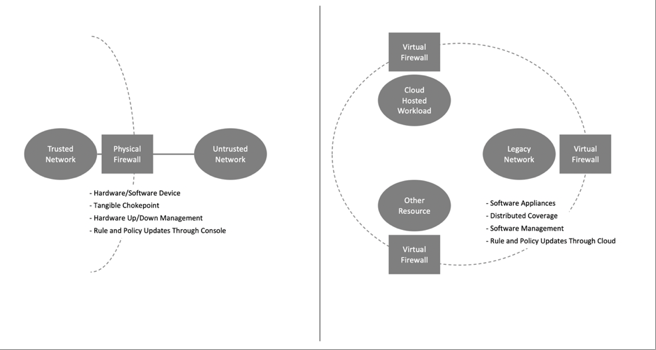Beginner's Guide to Quantum Machine Learning

Whenever you think of the word "quantum," it might trigger the idea of an atom
or molecule. Quantum computers are made up of a similar idea. In a classical
computer, processing occurs at the bit-level. In the case of Quantum
Computers, there is a particular behavior that governs the system; namely,
quantum physics. Within quantum physics, we have a variety of tools that are
used to describe the interaction between different atoms. In the case of
Quantum Computers, these atoms are called "qubits" (we will discuss that in
detail later). A qubit acts as both a particle and a wave. A wave distribution
stores a lot of data, as compared to a particle (or bit). Loss functions are
used to keep a check on how accurate a machine learning solution is. While
training a machine learning model and getting its predictions, we often
observe that all the predictions are not correct. The loss function is
represented by some mathematical expression, the result of which shows by how
much the algorithm has missed the target. A Quantum Computer also aims to
reduce the loss function. It has a property called Quantum Tunneling which
searches through the entire loss function space and finds the value where the
loss is lowest, and hence, where the algorithm will perform the best and at a
very fast rate.
How to Develop Microservices in Kubernetes
Iterating from local development to Docker Compose to Kubernetes has allowed
us to efficiently move our development environment forward to match our needs
over time. Each incremental step forward has delivered significant
improvements in development cycle time and reductions in developer
frustration. As you refine your development process around microservices,
think about ways you can build on the great tools and techniques you have
already created. Give yourself some time to experiment with a couple of
approaches. Don’t worry if you can’t find one general-purpose
one-size-fits-all system that is perfect for your shop. Maybe you can leverage
your existing sets of manifest files or Helm charts. Perhaps you can make use
of your continuous deployment infrastructure such as Spinnaker or ArgoCD to
help produce developer environments. If you have time and resources, you could
use Kubernetes libraries for your favorite programming language to build a
developer CLI to manage their own environments. Building your development
environment for sprawling microservices will be an ongoing effort. However you
approach it, you will find that the time you invest in continuously improving
your processes pays off in developer focus and productivity.
Enabling the Digital Transformation of Banks with APIs and an Enterprise Architecture

One is the internal and system APIs. Core banking systems are monolith
architectures. They are still based on mainframes and COBOL [programming
language]. They are legacy technologies and not necessarily coming out of the
box with open APIs. Having internal and system APIs helps to speed up the
development of new microservices-based on these legacy systems or services
that use legacies as back-ends. The second category of APIs is public APIs.
These are APIs that connect a bank’s back-end systems and services. They are a
service layer, which is necessary for external services. For example, they
might be used to obtain a credit rating or address validation. You don’t want
to do these validations for yourself when the validity of a customer record is
checked. Take the confirmation of postal codes in the U.S. In the process of
creating a customer record, you use an API from your own system to link to an
external express address validation system. That system will let you know if
the postal code is valid or not. You don’t need to have their own internal
resources to do that. And the same applies, obviously, to credit rating, which
is information that you can’t have as a bank. The third type of API, and
probably the most interesting one, is the public APIs that are more on the
service and front-end layers.
Can't Afford a Full-time CISO? Try the Virtual Version
For a fraction of the salary of a full-time CISO, companies can hire a vCISO,
which is an outsourced security practitioner with executive level experience,
who, acting as a consultant, offers their time and insight to an organization
on an ongoing (typically part-time) basis with the same skillset and expertise
of a conventional CISO. Hiring a vCISO on a part-time (or short-term basis)
allows a company the flexibility to outsource impending IT projects as needed.
A vCISO will work closely with senior management to establish a well
communicated information security strategy and roadmap, one that meets the
requirements of the organization and its customers, but also state and federal
requirements. Most importantly, a vCISO can provide companies unbiased
strategic and operational leadership on security policies, guidelines,
controls, and standards, as well as regulatory compliance, risk management,
vendor risk management, and more. Since vCISOs are already experts, it saves
the organization time and money by decreasing ramp-up time. Businesses are
able to eliminate the cost of benefits and full-time employee onboarding
requirements.
Why the insurance industry is ready for a data revolution

As it stands today, when a customer chooses a traditional motor insurance
policy and is provided with a quote, the price they are given will be based
on broad generalisations made about their personal background as an
approximate proxy for risk. This might include their age, their gender,
their nationality, and there have even been examples of people being charged
hundreds of pounds more for policies because of their name. If this kind of
profiling took place in other financial sectors, there would be outcry, so
why is insurance still operating with such an outdated model? Well, up until
now, there has been little innovation in the insurance sector and as a
result, little alternative in the way that policies can be costed. But now,
thanks to modern telematics, the industry finally has the ability to provide
customers with an accurate and fair policy, based on their true risk on the
road: how they really drive. Telematics works by monitoring and gathering
vehicle location and activity data via GPS and today we can track speed, the
number of hours spent in the vehicle, the times of the day that customers
are driving, and even the routes they take. We also have the technology
available to consume and process swathes of this data in real time.
Foiling RaaS attacks via active threat hunting
One of the tactics that really stands out, and they’re not the only
attackers to do it, but they are one of the first to do it, is actually
making a copy and stealing the victim’s data prior to the ransomware payload
execution. The benefit that the attacker gets from this is they can now
leverage this for additional income. What they do is they threaten the
victim to post sensitive information or customer data publicly. And this is
just another element of a way to further extort the victim and to increase
the amount of money that they can ask for. And now you have these victims
that have to worry about not only having all their data taken from them, but
actual public exposure. It’s becoming a really big problem, but those sorts
of tactics – as well as using social media to taunt the victim and hosting
their own infrastructure to store and post data – all of those things are
elements that prior to seeing it used with Ransomware-as-a Service, were not
widely seen in traditional enterprise ransomware attacks. ... You can’t
trust that paying them is going to keep you protected. Organizations are in
a bad spot when this happens, and they’ll have to make those decisions on
whether it’s worth paying.
Sizing Up Synthetic DNA Hacking Risks

Rami Puzis, head of the Ben-Gurion University Complex Networks Analysis Lab
and a co-author of the study, tells ISMG that the researchers decided to
examine potential cybersecurity issues involving the synthetic
bioengineering supply chain for a number of reasons. "As with any new
technology, the digital tools supporting synthetic biology are developed
with effectiveness and ease of use as the primary considerations," he says.
"Cybersecurity considerations usually come in much later when the technology
is mature and is already being exploited by adversaries. We knew that there
must be security gaps in the synthetic biology pipeline. They just need to
be identified and closed." The attack scenario described by the study
underscores the need to harden the synthetic DNA supply chain with
protections against cyber biological threats, Puzis says. "To address these
threats, we propose an improved screening algorithm that takes into account
in vivo gene editing. We hope this paper sets the stage for robust,
adversary resilient DNA sequence screening and cybersecurity-hardened
synthetic gene production services when biosecurity screening will be
enforced by local regulations worldwide."
Securing the Office of the Future

The vast majority of the things that we see every day are things that you
never read about or hear about. It’s the proverbial iceberg diagram. That
being said, in this interesting and very unique time that we are in, there
is a commonality—and Sean’s actually already mentioned it once today—there
are two major attack patterns that we’re seeing over and over, and these are
not new things, they’re just very opportunistically preyed upon right now
because of COVID and because of the remote work environment, but that’s
ransomware and kind of spear phishing or regular old phishing attacks.
Because people are at a distance and expected to be working virtually today
and threat actors know that, so they’re getting better and better at laying
booby traps, if you will, and e-mail to get people to click on attachments
and other sorts of links. ... Coincidentally, or perhaps not coincidentally,
one of the characters in our comic is called Phoebe the Phisher, and we were
very deliberate about creating that character. She has a harpoon, of course,
which is for, you know, whale phishing. She has a spear for targeted spear
phishing, and she also has a, you know, phishing rod for kind of regular,
you know, spray and pray kind of phishing.
How to maximize traffic visibility with virtual firewalls

The biggest advantage of a virtual firewall, however, is its support for the
obvious dissolution of the enterprise perimeter. Even if an active edge DMZ
is maintained through load balanced operation, every enterprise is
experiencing the zero trust-based extension of their operation to more
remote, virtual operation. Introducing support for virtual firewalls, even
in traditional architectures, is thus an excellent forward-looking
initiative. An additional consideration is that cloud-based functionality
requires policy management for hosted workloads – and virtual firewalls are
well-suited to such operation. Operating in a public, private, or hybrid
virtual data center, virtual firewalls can protect traffic to and from
hosted applications. This can include connections from the Internet, or from
tenants located within the same data center enclave. One of the most
important functions of any firewall – whether physical or virtual – involves
the inspection of traffic for evidence of anomalies, breaches, or other
policy violations. It is here that virtual firewalls have emerged as
offering particularly attractive options for enterprise security teams
building out their threat protection.
More than data

First of all, the system has to be told where to find the various clauses in
a set of sample contracts. This can be easily done by marking the respective
portions of text and labelling them with the clauses names they contain. On
this basis we can train a classifier model that – when reading through a
previously unseen contract – recognises what type of contract clause can be
found in a certain text section. With a ‘conventional’ (i.e. not DL-based)
algorithm, a small number of examples should be sufficient to generate an
accurate classification model that is able to partition the complete
contract text into the various clauses it contains. Once a clause is
identified within a certain contract of the training data, a human can
identify and label the interesting information items contained within. Since
the text portion of one single clause is relatively small, only a few
examples are required to come up with an extraction model for the items in
one particular type of clause. Depending on the linguistic complexity and
variability of the formulations used, this model can be either generated
using ML, by writing extraction rules making use of keywords, or – in
exceptionally complicated situations – by applying natural language
processing algorithms digging deep into the syntactic structure of each
sentence.
Quote for the day:
"You have achieved excellence as a leader when people will follow you everywhere if only out of curiosity." -- General Colin Powell
No comments:
Post a Comment